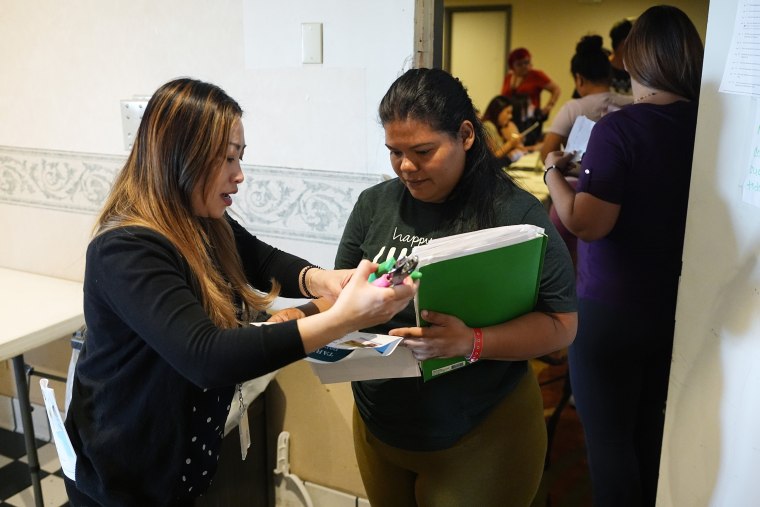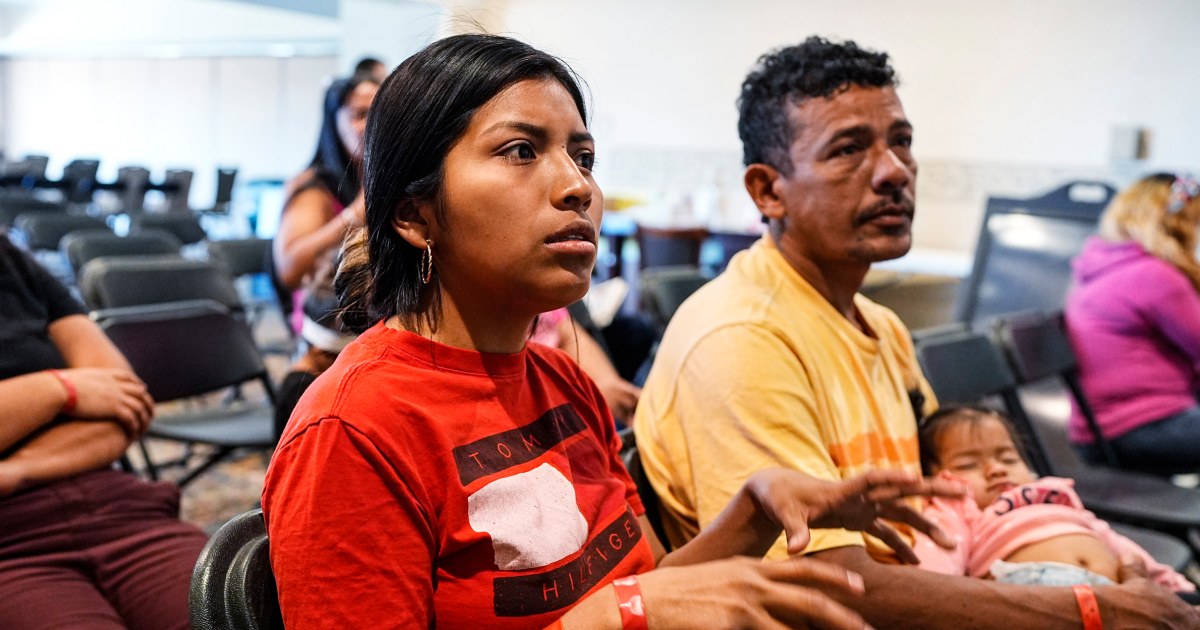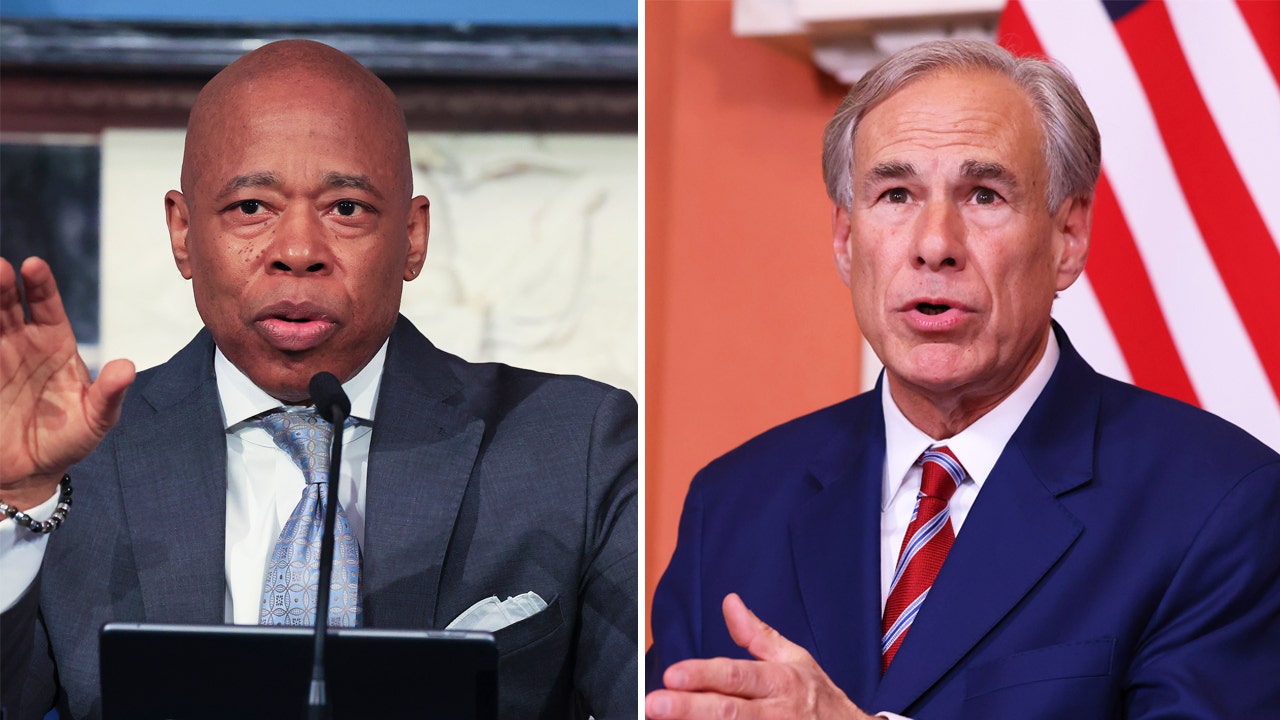After months of responding to its growing migrant community by sheltering new arrivals for limited periods of time, Denver has begun rolling out a new strategy designed to help people transition into more stable lives in the city by providing six months of housing, job training, language instruction and legal support in filing asylum claims.
Nearly 800 people were enrolled in the program as of Wednesday, with more expected to be added by the end of the month, Jon Ewing, a city spokesperson who manages communications for Denver’s newcomer response, said Wednesday.
Denver, New York and Chicago have been struggling to accommodate migrant populations that have grown considerably over the past two years. The cities have been housing people in hotels, tents and other makeshift shelters and scrambling to assemble social safety nets without devastating their budgets. Chicago and New York have put stricter limits on how long people can stay in shelters and begun evicting those whose time is up.
“Our goal was to take what people saw as a crisis and turn it into an opportunity,” Denver Mayor Mike Johnston said in an interview Wednesday. “We have people arriving in the city who desperately want to work, who have skills and talent and discipline. We have employers in the city who are starving to find employees, and they desperately want to hire them. What we wanted to do was to take those people that are looking to work and connect them to the training and the skills centered on jobs where we have the greatest need. So what we did is create this first-of-its-kind program in the country, which is this asylum-seeker program.”
Those enrolled in the Denver Asylum Seekers Program are migrants who were in Denver’s shelter system as of April and are applying for asylum, in which there is a six-month wait for work permits after they file applications, Ewing said.
Johnston said, “We tried to use that six-month waiting period as an opportunity instead of a problem.” In addition to assistance with asylum applications, those enrolled in the program will receive workforce training, English classes, financial literacy instruction and the ability to get certifications needed for migrants to work in certain industries.
“So when that work authorization comes, you already have the skills, the training, the authorization, the certification to step onto a job on Day One and be a huge asset to a Denver employer,” he said.
Since Texas Gov. Greg Abbott began busing migrants to Democratic cities in 2022, about 42,000 have arrived in Denver. Most have chosen to relocate to other cities where they have friends or family.
Of the roughly 800 people living in migrant shelters in Denver, about 530, most of whom are in the new program, were living in a hotel shelter as of Wednesday, Ewing said. About 200 are living in transitional housing and a shelter run by Catholic Charities, and 68 others are in short-term shelter, Ewing said. Some people have also already been moved into apartments.

Denver has far fewer people in its shelter system than Chicago and New York City.
There were 7,233 migrants in Chicago shelters as of Wednesday, according to city data. The city said it has received more than 42,000 migrants since 2022.
In New York City, there were more than 65,800 migrants and asylum-seekers in need of shelter, the city said in a statement last week, and nearly 200,000 migrants have arrived since 2022.
While there are more migrants in those cities, officials in Denver have said it has welcomed more people per capita.
Ewing said the city’s pivot in policy has been made possible now that Denver is receiving fewer migrants, with about 76% of new arrivals “immediately taking onward travel to another destination,” allowing the city to focus on more intensive assistance for migrants seeking to remain there.
In December, 144 charter buses with newly arrived migrants were sent to Denver, and its shelter population swelled to about 5,000, many of them families with children, Ewing said. That situation was untenable, and it left many migrants adrift in search of under-the-table jobs that were increasingly difficult to get, Ewing said.

“The goal is to provide those more sustainable services. It is for a smaller group of people than when we had 5,000 people in shelter, but it’s much more substantial, much more comprehensive, much more beneficial to them in the long run,” Ewing said.
The city has spent about $70 million on its migrant response since 2022, with about $20 million to $25 million spent so far this year. Nearly $52 million of it was spent on shelter and housing, with shelter costing much more than housing, Ewing said.
“The more we get away from operating shelters, the less we spend,” he said. “We initially projected we could spend up to $180 million in 2024 if we continued to shelter thousands of people over the course of the entire year.”
The city has budgeted $90 million for its new arrivals program this year, “but the goal is to not spend that much,” he said.
“Of course, we have no way of knowing what the fall or winter will hold, which is why we have to budget so much,” Ewing said.
The budget includes $4 million for workforce training and supplemental rental assistance, as well as $5.6 million for case management, including asylum clinics and work authorization, Ewing said.

City officials have defended the $40 million budget cut that will help pay for their migrant response, saying about $20 million of the cuts would come from not hiring for vacant positions. The city has said that it has also been able to restore some city services and that the average cut to services was about 2% of agency operating budgets.
Some have criticized the city’s proposal to cut $8 million from the police department, about 1.9% of its budget, while expanding services for migrants. The city has said that the cuts will not change the number of officers deployed on the street, that it has not changed its plans on recruiting, that $5 million of the proposed cuts would come from not filling open positions and that other cuts include measures like delaying new furniture purchases.
Johnston said he hopes the program will spur other cities to take notice and potentially implement similar policies and procedures.
“We do think we have a solution that every city can use,” he said. “Denver can’t solve this problem alone.”















